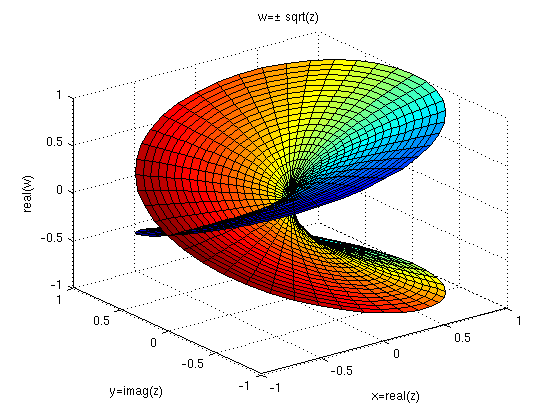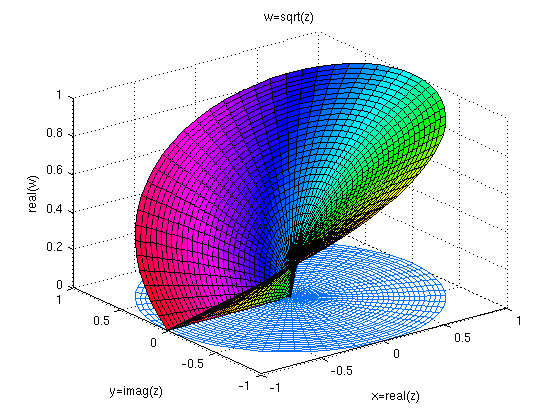i=sqrt(-1)
z = -2 - i/2^6
disp('[real(z), imag(z)]'),
[real(z), imag(z)]
disp('[abs(z), angle(z)]'),
[abs(z), angle(z)]
zstar=conj(z); zstar
[abs(zstar), angle(zstar)]
disp('[ln(z), ln(z*)]'),
[log(z), log(zstar)]
(2+3*i)^(6+2*i)
figure(1), cplxroot(2)
xlabel('x=real(z)'), ylabel('y=imag(z)'),zlabel('real(w)'), title('w=\pm sqrt(z)')
z=cplxgrid(30);
figure(2), cplxmap(z,sqrt(z))
xlabel('x=real(z)'), ylabel('y=imag(z)'),zlabel('real(w)'), title('w=sqrt(z)')
help cplxdemo
i =
0 + 1.0000i
z =
-2.0000 - 0.0156i
[real(z), imag(z)]
ans =
-2.0000 -0.0156
[abs(z), angle(z)]
ans =
2.0001 -3.1338
zstar =
-2.0000 + 0.0156i
ans =
2.0001 3.1338
[ln(z), ln(z*)]
ans =
0.6932 - 3.1338i 0.6932 + 3.1338i
ans =
-1.7572e+02 + 2.5264e+02i
Functions of Complex Variables
MATLAB(R) can help you perform some very interesting manipulations on complex
variable.
Copyright 1984-2007 The MathWorks, Inc.
$Revision: 5.10.4.2 $ $Date: 2007/12/14 14:51:01 $
Published output in the Help browser
showdemo cplxdemo



